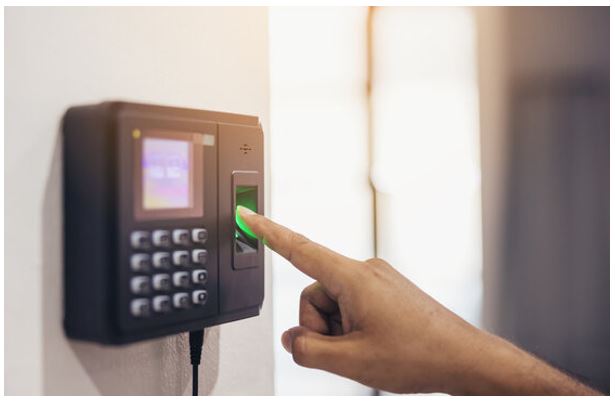How Time Attendance System Can Boost Employee Productivity
INTRODUCTION
Have you ever wondered what makes successful organizations excel? Is it merely resources at their disposal, or is it something more? Have you given a thought to the fact that time, our most valuable resource, could be leveraged better in our professional lives? Enter, Time Attendance System (TAS). They might be the unsung heroes of the corporate world that could give your company the efficiency boost it needs. Our focus in this blog will be to unravel how time attendance systems can become instrumental in elevating employees’ productivity levels.
In the frenzy that is the 21st-century work environment, a major challenge for most organizations is managing and optimizing their human resources. With numerous tasks conducted simultaneously, how can a company ensure optimal use of time while ensuring employee satisfaction and productivity? TAS- Time Attendance System may hold the key to this conundrum. In the sea of cutting-edge technologies, TAS can often be overlooked, but their potential is vast and untapped.

Facing a dip in productivity levels or struggling with time management? Perhaps it’s high time you gave Time Attendance System a chance. Let’s explore this ground-breaking tool and its potential to revolutionize your workspace by ensuring proper time utilization and increased productivity.
Understanding the Magic: What are Time Attendance Systems?
To initiate the journey, we begin by deciphering what exactly Time Attendance System are. In its core, TAS can be defined as a process of tracking and managing employees’ working hours. The beauty of these systems is their evolution. TAS are no longer about just registering clock-in and clock-out timings. modern time attendance system track breaks, absences, and even job costing!
These systems can now be tailored to suit specific requirements of an organization and can be incorporated into various platforms – Remote PCs, mobile devices, or fingerprint biometric devices. Besides, they provide real-time data, allowing quick decision making, planning, and resolution – key to optimal time management.
Moreover, their efficiency in eradicating manual processes nudges us a step closer to a paperless working environment while increasing accuracy. Visionary entrepreneurs and forward-thinking managers realize the advantages these systems add to an organization, both tangibly and intangibly.

Unleashing Productivity: Why Should You Implement TAS in Your Workspace?
The question arises – what do Time Attendance System have to do with productivity? Quite a lot, actually! By ensuring accurate time-keeping, TAS can prevent potential time theft and buddy punching scenarios. This in itself leads to a more accountable and transparent work environment.
Organizations using TAS see a marked improvement in operational effectiveness as a direct result of time saved, which otherwise would be spent on handling time entries manually. Additionally, real-time data aid in forecasting workloads and staffing needs, making planning and scheduling more effective.
Crucially, when employees see that their time is accurately logged and they are compensated rightly, it instills a sense of fairness, leading to improved job satisfaction and engagement – preconditions for high productivity.
Benefits and Challenges: Pros and Cons of Time Attendance System
Like every coin has two sides, Time Attendance System also come with their unique set of advantages and challenges. Wealth of features varying from overtime calculation, integration with payroll systems, to tracking time spent on separate projects make TAS a valuable addition.
However, challenges like security of stored data and privacy can poke holes in the adoption of these systems. Over-reliance on technology and access control system malfunctions are also potential pitfalls.

Despite some challenges, the benefits make a compelling case for companies to consider adopting time attendance system. Properly implemented, they can provide a significant return on investment by ensuring better time utilization, increased productivity, payroll accuracy, and enhanced employee morale.
The Future: Seamless Integration with a Variety of Applications
The potential of TAS is not limited to timekeeping alone. The systems are being built with capabilities to integrate with a variety of applications such as payroll systems, HRMS (Human Resource Management System) and even ERP (Enterprise Resource Planning) platforms.
Such integrations can significantly streamline and automate processes bringing about improved efficiency and reduced administrative tasks, and errors. This opens up more time for employees to concentrate on their core tasks, again playing a key role in increasing the overall productivity.
Ways to Implement a TAS: Biometric or Non-Biometric?
The method of implementation largely depends on the ethos of the organization. While some might prefer the accuracy and verifiability offered by a biometric system, others may opt for non-biometric alternatives such as mobile or web-based systems due to their flexibility.
Many organizations are also moving towards a hybrid model, combining a mix of biometric and non-biometric systems to suit the varying needs of their diverse workforce.
CONCLUSION
Time is certainly at the core of productivity, and it’s time we leverage it effectively. Time Attendance System are not just time tracking tools, but they are an innovative gateway to enhanced productivity, efficiency, and satisfaction in the workplace.
In an era where time is indeed money, TAS offer solutions that marries accuracy with productivity. While the adoption journey might seem daunting initially, and yes, there could be a few stumbling blocks on the way; the potential of improved productivity and efficiency make it an investment worth considering. The time is ticking, are you ready to jump on the TAS wave to propel your organization’s productivity?


Pingback: Biometric workforce management system
Pingback: Time attendance system face recognition
Pingback: Impact of biometric attendance systems